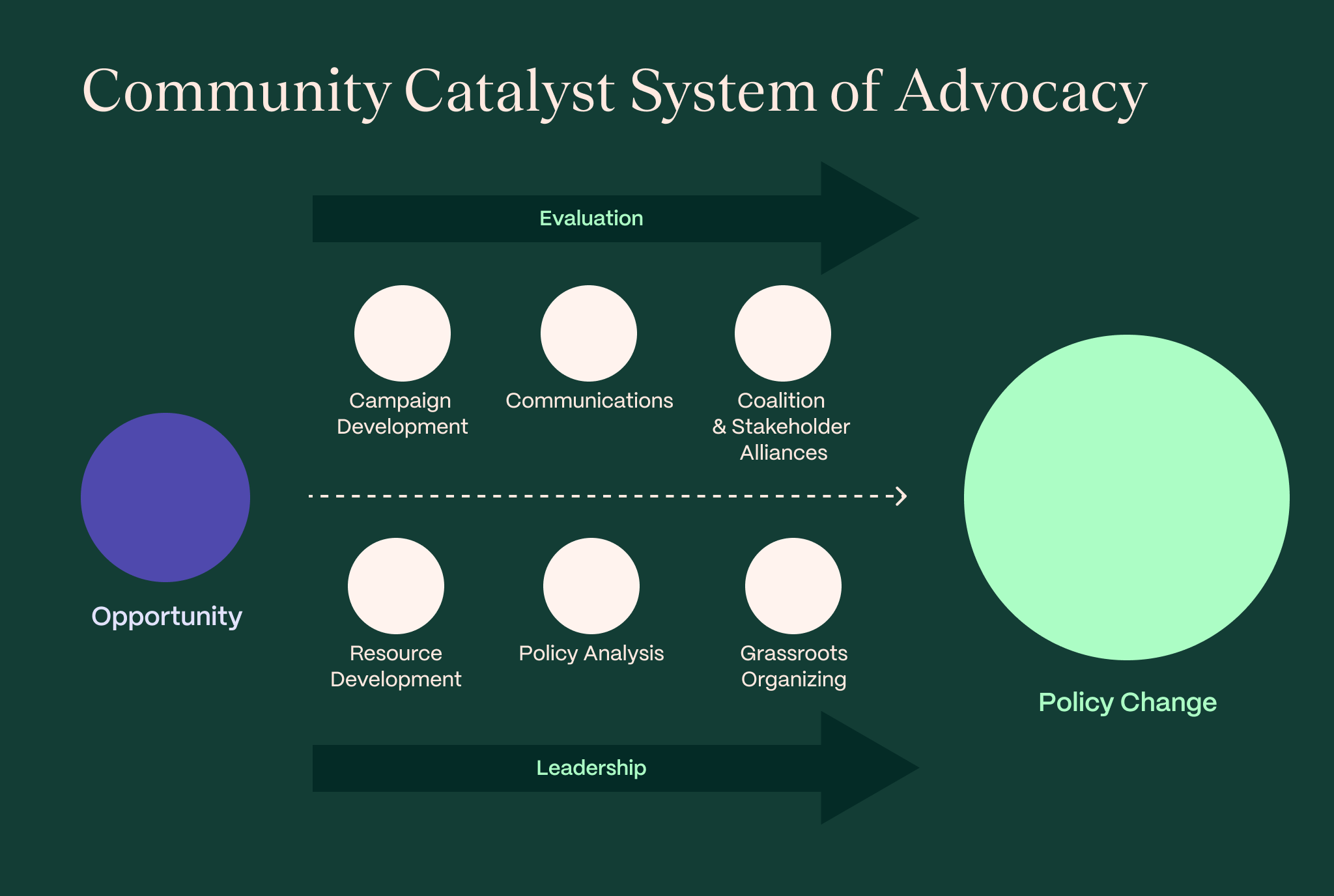System of Advocacy
Community Catalyst partners with local and state organizations to ground policy and practice change goals in community perspective and leadership, build campaigns to advance those goals, and grow organizational reach and impact as a part of our shared power building work. One of the ways we do this is by leveraging our System of Advocacy — an approach we built alongside partner organizations. The System of Advocacy is collaborative and dynamic, and emphasizes listening, sharing information and resources, and facilitating learning.

Grounded in Community Perspectives
The System of Advocacy focuses on the core capacities involved in advancing an established policy or practice change agenda — an agenda grounded in community perspective and input. Whether the goal is to pass legislation that will advance health equity or to defend against attacks on critical programs like Medicaid, there are six core advocacy capacities that are essential to making progress towards a change agenda:
They include the capacity to:
- Analyze legal and policy issues to identify goals that advance an agenda established by a community
- Develop and implement advocacy campaigns
- Build and maintain strong broad-based coalition and stakeholder alliances
- Design and implement communications strategies
- Build and leverage grassroots support
- Generate funding resources to support the work
Evaluation & Leadership
These capacities are undergirded by two supporting capacities: evaluation and leadership. These supporting capacities play an important role within and across each of the six capacities. Both are essential to bolstering the impact of each individual capacity, as well as fostering broader organizational and coalition growth.
- Evaluation: Monitoring and evaluating progress, outcomes, and impact is a critical component of any initiative. Evaluation ensures ongoing learning and highlights whether strategies and tactics being pursued are achieving what was intended — whether that is an evaluation of the impact of an organizing effort, an evaluation of the reach of a communications tactic, or an evaluation of whether a policy goal achieved the desired impact.
- Leadership: Supporting leaders and fostering the growth of emerging leaders is a critical part of propelling the core components of the system of advocacy. Whether it be supporting leaders as they forge new alliances as a part of a coalition building effort or supporting emerging leaders as they work to build out their first advocacy campaign effort — incorporating leadership development into every advocacy initiative is a central part of both advancing an agenda and building power more broadly.
Thriving Through Collaboration & Partnership
The System of Advocacy thrives through collaboration and partnership. Different organizations have different strengths, but it’s when we come together to leverage those strengths as a collective whole that the biggest and most meaningful change can happen.
Community Catalyst works with partners to strengthen each of the capacities and to foster an evolving system of advocacy designed to advance health equity goals across the country. We do this by creating learning communities, by identifying and sharing new models of organizing and communications, by offering policy analysis and campaign development support, by raising and sharing resources with partner organizations, and by working closely with partners to support their day-to-day work to advance their goals.
Working Nationally
Our work with partners is designed to scale at the national level. We strongly believe in the possibility that comes with local and state organizations from across the country collaborating together to design and advance change at the federal level. As a national organization with deep ties to local and state partners across the country, Community Catalyst is focused on fostering that nationwide collaboration and leveraging the System of Advocacy to advance change at all levels.